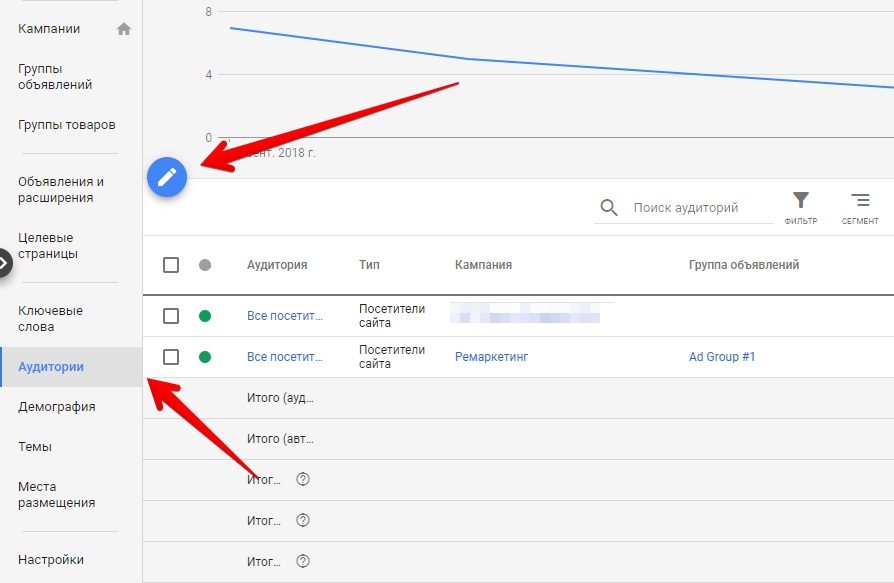- How does RLSA (search remarketing) work?
- How is search remarketing different from standard remarketing?
- Benefits of Google Ads search remarketing
- Ways to use RLSA
- Specifics of setting up Target&Bid search remarketing
- How do I set up search remarketing in Google AdWords?
- Tips for working with Google search remarketing
The task of search remarketing is to selectively display ads in search to potential customers who belong to the remarketing audience.
With the help of this tool, you can run a successful campaign aimed at bringing visitors back to your website or app. A well-thought-out, relevant offer allows you to increase its effectiveness and motivate your audience to make deals.
How does RLSA (search remarketing) work?
The abbreviation RLSA consists of the first letters of the English word combination “Remarketing Lists for Search Ads” and translates as “Remarketing Lists for Search Ads”.
How many calls and sales will I get by ordering contextual advertising from you?
I need to calculate the conversion of my website Describe
the task
in the application
Calculate potential ad revenue Google
contextual advertising calculator
The mechanism of work of this tool is based on the selection of ads and determination of bids, based on the behavior of visitors interested in your product, who come to the site again.

For example, a user visited the site of a repair shop and studied the page with information about servicing Indesit washing machines for a long time. After a while, he continued his search for a solution to his problem and this time entered the query “repair of household appliances in Kiev”.
But we already have information that the visitor most likely has a broken washing machine Indesit. Using Google Ads search remarketing, you can select the most relevant ads to his perceived need and even increase the click-through rate for him.
How is search remarketing different from standard remarketing?
These tools differ in their working principle and are aimed at achieving different results. The platforms for displaying ads using classic remarketing are Google applications and partner sites, YouTube, and email.
With the help of search remarketing, you can build effective interaction with potential customers interested in the product or customers who have made deals.
Important! Unlike standard remarketing, these ads appear on the screen of a potential customer at the exact moment when he makes a request to the search engine. Ads are displayed in Google’s output in the most relevant time period for the transaction.
Benefits of Google Ads search remarketing
The list of users to whom Google AdWords search remarketing ads are shown is made up of those who have already had contact with the advertiser or its product. Usually, it includes users who have previously visited the site, expressed interest in the product or bought goods and services posted on the site.
This allows you to highlight the obvious advantages of such a tool:
- Loyal audience. If there is a positive experience of interaction with the company or its site, the user is very likely to re-visit it and make a purchase, having seen a link to a familiar web resource in the search again. In this situation, an effective step is to increase the rate, which allows you to squeeze competitors in the output;
- Relevancy. Having information about the interests of the user, the advertiser can form and demonstrate the most relevant offers. For example, for those who were interested in classes to learn French with a native speaker, will work well ad, which focuses attention on the advantages of lessons with a teacher from France organized in your school. Or if the visitor placed the product in the cart, but did not complete the checkout, a reminder of this product at the time of searching for related queries can motivate the user to make payment;
- Efficiency. Taking into account the accumulated statistics and forming relevant offers, it is possible to target advertising and reduce the number of ineffective impressions. This will result in higher conversion rates and higher efficiency of the advertising campaign as a whole.
Ways to use RLSA
There are two approaches to forming an RLSA:
- BidOnly. The ads will be seen by users who enter the specified phrases in the search, and the bids will be optimized for such displays. This method can increase the maximum cost per click to increase the likelihood of showing ads to those who have recently visited the site;
- Targeting(Target&Bid). The system will display ads on the screens of users in the remarketing list. When making a marketing offer, you should be guided by information about your audience. For example, those who “forgot” about the items in their shopping cart can be reminded or offered a discount.
Tip! To increase the likelihood that your remarketing list ads will be shown, expand your semantics and add phrases you don’t normally use.
The size of the remarketing audience affects the choice of one approach or another. For example, targeting a small list is ineffective.
Specifics of setting up Target&Bid search remarketing
When setting up search remarketing, it is recommended to expand the semantic core (apply broad match for keywords, add low-frequencies). The list of minus-words should be reduced as much as possible.
How many calls and sales will I get by ordering contextual advertising from you?
I need to calculate the conversion of my website Describe
the task
in the application
Calculate potential ad revenue Google
contextual advertising calculator
This approach increases the number of potential requests that will cause the display of advertising for the right audience. It is limited exclusively to those who have shown interest in the product, so you should not worry about a large volume of untargeted traffic.
Tip! When drafting the text of ads, it is important to take into account any information about the behavior and interests of the audience. You need to create a relevant offer for each segment of your audience.
The more information you have about your users, the more effective your ads will be.
To prevent ads from competing with each other, remove duplicate audiences in other ad campaigns.
How do I set up search remarketing in Google AdWords?
To run search remarketing in Google Ads, you need to create an audience list of at least a thousand site visitors and add it to a functioning or newly created RC.
Use Google Ads or Analytics to generate it. Possible remarketing lists can be found in the Audience Manager section. There you need to look for the “Audience Lists” item.
When creating a new audience, don’t forget to set up the time during which users will be present in the list. The length of this period depends on the time it takes to make a decision in your niche. For pizza delivery, the interval can be a week, and for residential real estate sales – up to six months.
Remarketing list is added at the level of both campaign and ad group – choose the appropriate option depending on the need.
The audience for advertising is selected in the section of the same name. Click on “+Audiences” to create a new list. Use the pencil button to customize it:

Select the level at which the list will be used, then set the remarketing type and audience type. Our target is users who have visited the company’s website, so we use the category “How do they interact with your company?”:

After that, we mark the necessary lists and save the settings.
The final step is to determine the range of rate adjustments. They can be increased up to 900% or decreased within a range of up to 90%.
Tips for working with Google search remarketing
To make advertising effective and bring conversions and leads before you set up search remarketing, consider the following recommendations:
- Use more keyword phrases. If you set up search remarketing in a separate advertising campaign, then supplement the semantic core with medium- and low-frequency keywords in broad match, word combinations with high frequency in the query statistics should also not be forgotten. Revise the list of minus-words in the direction of reduction. So the ad will be seen by more users, while untargeted traffic will be minimal, because the audience is limited only to those who are interested in your product.
- Personalize your offer. When creating ads, use all the data you have at your disposal about user behavior and interests. Knowing your audience allows you to maximize the effectiveness of targeting. The offer for each target group should be different. For example, site visitors who have placed a product in the cart and have not completed the order should be reminded of this and given more interesting conditions (good discount, free shipping, bonus, etc.).
- Segment the audience. Separate users who meet the remarketing criteria into a separate group, while excluding them from regular campaigns. This way, different ads will not compete with each other.
- Create a separate group of users who have already made a purchase. This will allow you to avoid showing advertisements for products they have previously purchased. You will also be able to promote a related range of products to these loyal customers.
- Incentivize repeat sales. Promote products that are often purchased repeatedly or promote services that require renewal. In this case, it is important to keep track of the date of the previous transaction and regularly inform the customer of new offers.
- Remind about forgotten baskets. Formulate a message to those visitors who studied some product on your site, threw it in the cart, but for some reason did not return to complete the checkout. A reminder message or displaying information about a discount in a search ad works effectively for this audience.


















